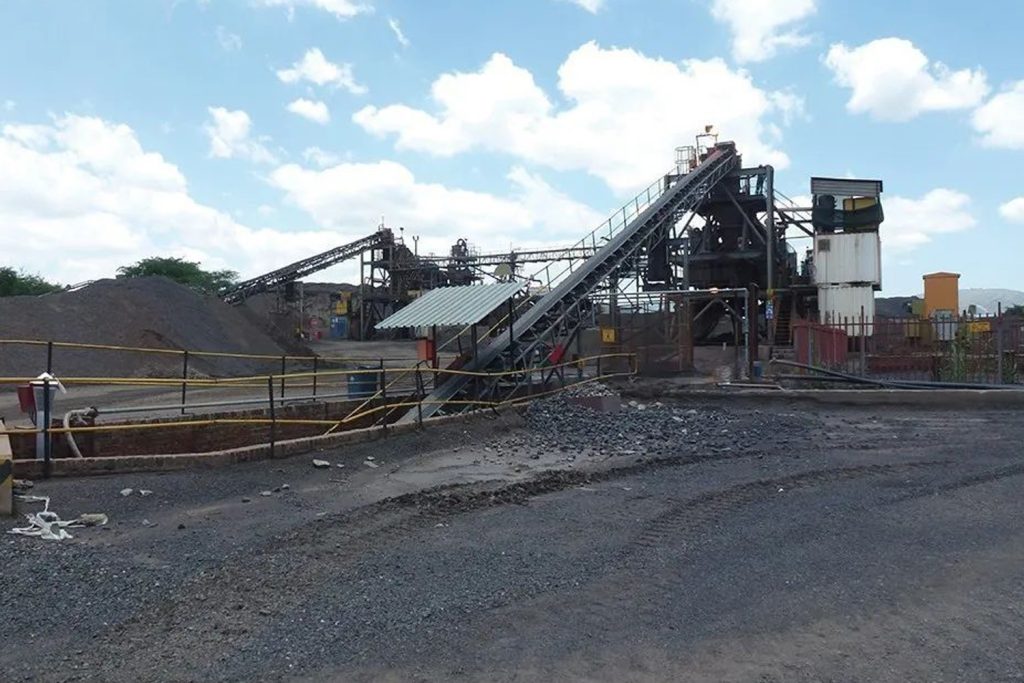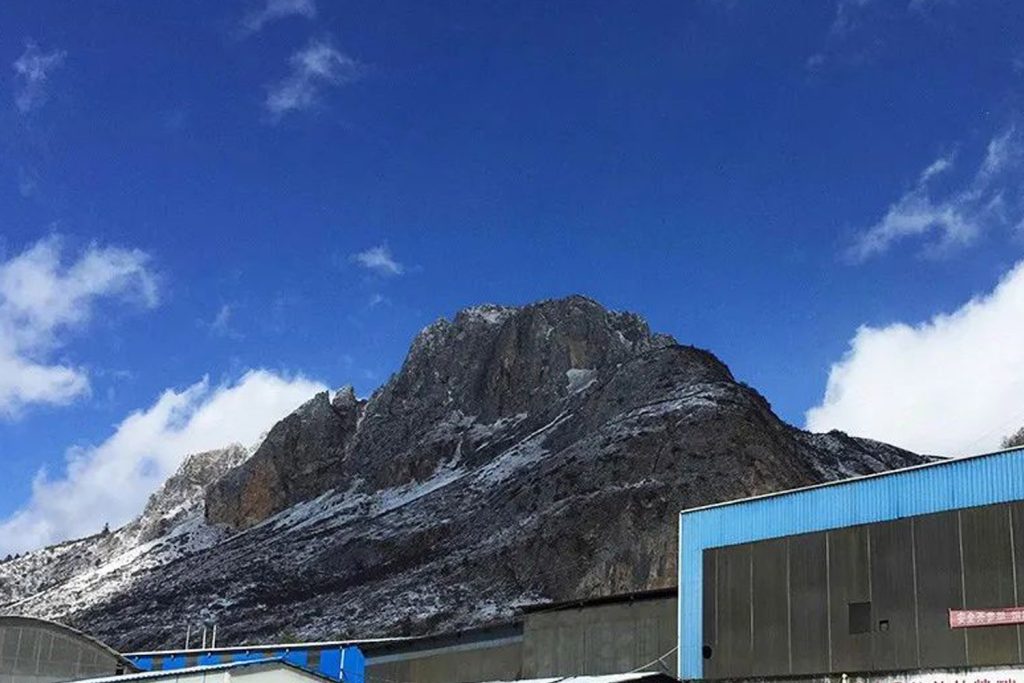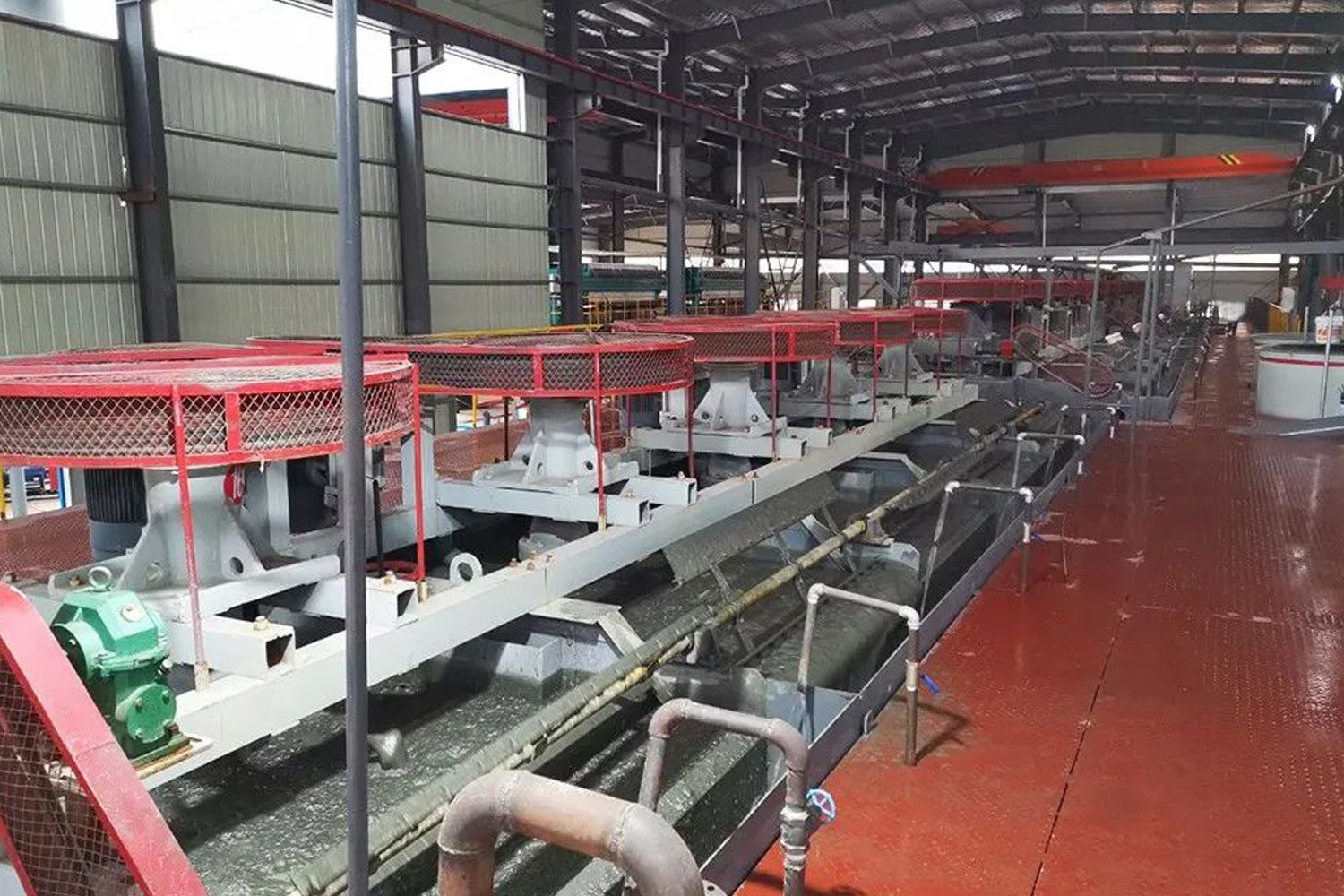Altered rock type gold deposits (also known as hydrothermal alteration type gold deposits) refer to gold-bearing deposits formed by underground hydrothermal alteration. This type of gold deposit mainly occurs in the metamorphic rock belt near the structurally active zone. The underground hydrothermal fluid will rise with high temperature and high pressure mineralized fluid, and react with the surrounding rocks, causing the rocks to be altered and mineralized. Gold, silver and other metal elements in the fluid will then precipitate to form gold deposits.
Four methods of mineral processing of altered rock gold ore
Altered rock type gold-bearing deposit is a type of deposit with high gold content, in which the ore mineral composition is complex, including pyrite, magnetite, galena, galena, chalcopyrite, chalcopyrite, Chlorite, dolomite and other minerals.
Due to the rich sulfide and complex precious metal components in its gold ore, it is necessary to use a variety mineral processing methods in themineral processingto effectively improve the recovery rate of gold and other precious metals.
The following is a detailed description of the common mineral processing methods in altered rock type gold-bearing deposits, including flotation, debonding-flotation, gravity separation and chemical mineral processing.
Flotation
Flotation is a mineral processing method that floats and separates target minerals based on their physical properties. In the mineral processing of altered rock-type gold-bearing deposits, the flotation method can be used to separate gold ores containing impurities.
The main process of flotation
- Ore crushing: crush the ore to a certain particle size.
- Mineral impregnation: Spray the flotation agent into the ore so that the target minerals in the ore can be fully impregnated.
- Stirring: Use a stirrer to inject the air or oxygen in the solution into the slurry, so that the target minerals are separated.
- Separation: During the stirring process, the target minerals will rise to the surface layer together with the flotation agent, and then achieve flotation separation through mechanical separation.
Flotation is a mineral processing method widely used in altered rock type gold-bearing deposits, which can effectively separate gold ores containing impurities and improve the recovery rate of gold.

Debonding-Flotation
Debonding-flotation is a mineral processingmethod based on different surface charges of minerals and different movement speeds in water. In the mineral processing of altered rock type gold-bearing deposits, gold-bearing ores can be separated by debonding-flotation.
The main process of debonding-flotation method
- Ore crushing: crush the ore to a certain particle size.
- Desliming: Use a desliming machine to remove silt, impurities and other substances in the pulp.
- Debonding: The pulp with strong viscosity, such as loess and clay containing iron oxide, is pre-debonded to remove the fine particles adhered to the surface, so as to carry out the next step of flotation treatment.
- Flotation: Add flotation agent into the pulp, and through mechanical stirring and wind force, the minerals will float to the surface of the water, and then separated and collected.
Debonding-flotation method is an efficient mineral processing method, which can effectively remove impurities such as clay in ore and improve the recovery rate of gold.
re-election method
Gravity separation is a method based on the state of motion of minerals in dense media to achieve mineral separation. In the mineral processing of altered rock-type gold-bearing deposits, gravity separation can be used to separate gold-bearing ores.
The main process of the re-election method
- Ore crushing: crush the ore to a certain particle size.
- Screening: The ore is separated into particles of different sizes through a screening device.
- Dense medium mineral processing: put ore particles of different sizes into the density adjustment device, and adjust the density of the dense medium to achieve separation according to the density.
- Washing: wash, remove impurities or grind the separated ore particles to improve the recovery rate of gold.
Gravity separation is an effective mineral processing method, which separates ores by using the difference in gravity between different particles, which can reduce processing costs and improve production efficiency while ensuring the separation effect.

chemical mineral processing
Chemical mineral processing is a method of mineral processing and separation through chemical reactions on the surface of minerals. In the mineral processing of altered rock-type gold-bearing deposits, chemical mineral processing methods can be used to efficiently and accurately beneficiate materials containing gold or gold-bearing sands that are difficult to float, have low concentrations, and complex components.
The main process of chemical mineral processing method
- Leaching: Use cyanide or other appropriate leaching agents to dissolve gold-containing ores to obtain gold ions.
- Chemical precipitation: After leaching, the gold in the ore is precipitated by chemical reaction.
- Electrowinning: Place the precipitated gold ions in an electrolytic cell and use an electric current to convert them into solid, high-purity metals.
- Dissolving electrodeposition: After electrowinning, the deposit needs to be dissolved to obtain a pure gold solution.
Chemical mineral processing is a challenging mineral processing method, which requires careful adjustment of parameters such as leaching agent and reaction kinetics to achieve a high separation effect.
In practical application, it is necessary to select the appropriate chemical mineral processing method according to different ore characteristics and process requirements, and make careful adjustment and optimization to obtain efficient mineral processing effect and high gold recovery rate.
summary
The mineral processing methods of altered rock type gold-bearing deposits can be divided into various methods such as flotation, debonding-flotation, gravity separation and chemical mineral processing according to their physical and chemical characteristics.
Different mineral processing methods are suitable for different types of ores. In practical applications, comprehensive consideration should be made according to the characteristics of ores, and reasonable adjustments and optimizations should be made to obtain the best mineral processing effect and production benefits.
